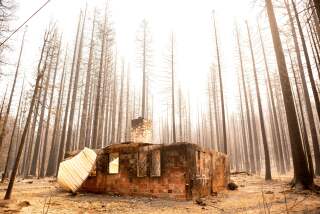How to Make Sure Reserve Fund Is Adequate
- Share via
QUESTION: The governing documents (CC&R;’s) of our association state that we must set aside funds every month for a reserve account, but a specific amount is not given. How do we know if our reserve funds are adequate? What happens if we have an emergency and the reserve funds are not sufficient to cover the expense?
ANSWER: Your questions bring up some common concerns for most homeowners and board members. It’s good that your governing documents don’t state a specific amount for your reserve funds since inflation and changing needs of the association have an effect on the total reserve amount required as time rolls along.
Let’s look to our state laws for guidance. California Civil Code, Section 1365, states that the annual budget must include an estimate of the current replacement costs, the estimated remaining useful life and the methods used to defray the cost of future repair, replacement, or additions to, the major components which the association is obligated to maintain.
In order to determine if the reserve fund is adequate, the board must identify all the major components of the common elements (e.g. roofing, swimming pool, common area furnishings). Then all the factors listed above must be established.
If your association’s common elements are extensive or you can’t find a competent volunteer within the association to do this work, your board should contract with a company that provides reserve studies or reserve analysis reports. The cost and the end product will vary considerably from one company to another.
If an emergency arises and reserve funds do not cover the cost of repairs or replacement, your board will have to approve a special assessment or obtain a loan from a lending institution. (Unfortunately, not all lending institutions are interested in lending money to community associations.)
Each homeowner’s fee will then be increased temporarily. Special assessments can be either lump-sum payments or paid over a period of months, depending on how the board determines to collect the special assessment. Consult your association documents to see what restrictions apply to special assessments.
In addition, California Civil Code, Section 1366(b), does not limit the amount of special assessments for specific emergency expenditures, so be aware that a new roof, for example, might require a very large special assessment.
The reserve study is an important part of the budgeting process. Proper budgeting and reserve planning will protect you from special assessments, which are always unwelcome surprises.
Community Associations Institute (CAI) publishes a 37-page booklet entitled “Reserve to Preserve.” It has in-depth information about reserve planning and calculations. The cost is $14. Send a check, made out to: “Reserve to Preserve,” CAI, P.O. Box 84303, Los Angeles 90073. Allow five weeks for processing and mailing.
Where to Get Data on State Condo Laws
Q: I am on the board of directors of my condo association. I was surprised to learn of some of the legislation that you have written about recently. How can we obtain more information about state laws that govern community associations? What sections of California law should we look for?
A: Each county in California has a law library. You can obtain photocopies of a limited number of pages for a small fee. You may also write to the California State Law Library, P.O. Box 942837, Sacramento, Calif. 94237-0001
Most of the laws governing community associations appear in the California Civil Code, sections 1350 through 1373. If your association is incorporated, you will want to consult the California Nonprofit Corporation Code, Section 7210 through 7238. Statutes of Limitation are covered in the Civil Code, Sections 337 and 338. Disclosures for transfer of ownership of residential property are covered in Sections 1102 through 107 and Sections 1133 and 1134.
Owners Made Change in Units’ Exteriors
Q: Two owners in my association have remodeled the exterior structures of their units so that they differ from the others in the complex. The president was out of town when the work was done. The remodeling is completed now and I’d like to know what my rights are regarding rectifying this matter. Where do I begin?
A: Is the work that was done contrary to the covenants, conditions and restrictions (CC&Rs;)? Have you checked if the remodeling owners obtained approval from the association? Did they obtain permits from the local government agency? If the work was done without proper authorization and building permits, you and the association may have recourse.
Even though the president was out of town, you should have notified the other board members of your concern as soon as you noticed the construction in progress.
If you haven’t already done so, you should start by talking with or sending written notification to your board, stating that you object to the changes that were made. The board should then determine if they are going to take any action.
Readers with questions or comments can write to her in care of “Condo Q&A;,” CAI, P.O. Box 84303, Los Angeles 90073.
More to Read
Sign up for Essential California
The most important California stories and recommendations in your inbox every morning.
You may occasionally receive promotional content from the Los Angeles Times.










